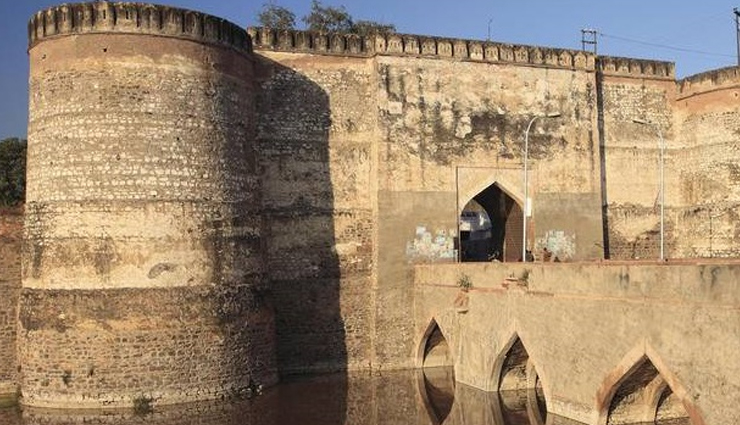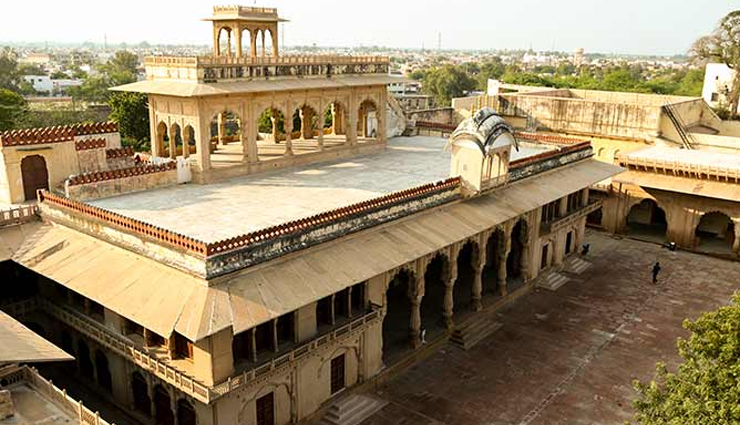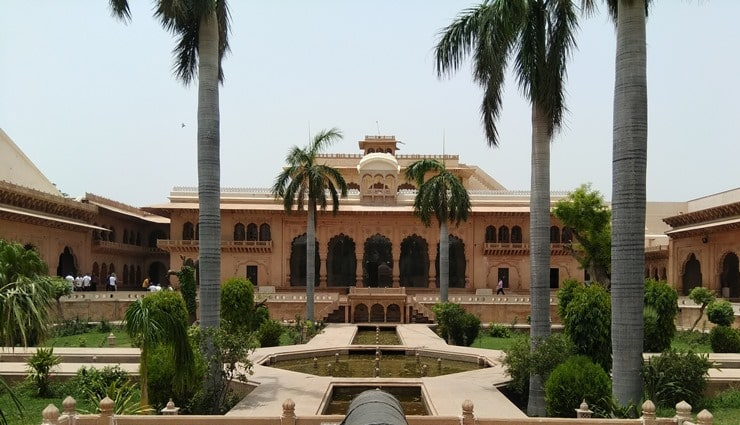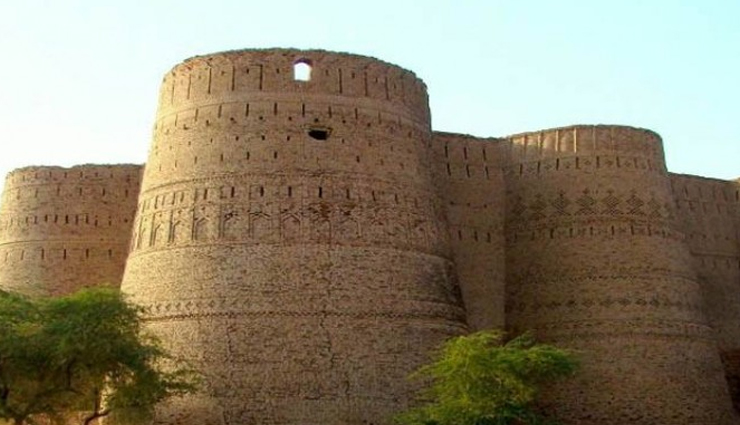Few Interesting Things To Know About Lohagarh Fort In Rajasthan
By: Priyanka Maheshwari Mon, 27 Mar 2023 3:18:05

Lohagarh Fort is a historic fort located in Bharatpur, Rajasthan, India. The fort was built by Maharaja Suraj Mal, the founder of the Bharatpur dynasty, in the early 18th century. The fort is also known as the Iron Fort or the Agra Fort of Bharatpur, and it is one of the strongest forts in India.
Lohagarh Fort was built to protect the kingdom from the invading Mughals and the British. The fort was designed to be impenetrable, with its high walls, deep moats, and numerous bastions. The fort has withstood several attacks, including those by the British during the Indian Rebellion of 1857.
The fort has several important structures within its walls, including the Kishori Mahal, Mahal Khas, and Kothi Khas. The Kishori Mahal is a beautiful palace with intricate carvings and designs, while the Mahal Khas was used as the residence of the royal family. The Kothi Khas was used as the treasury and also served as a granary.
Today, Lohagarh Fort is a popular tourist destination and is visited by thousands of visitors every year. The fort is a testament to the engineering prowess of the Bharatpur dynasty and the resilience of its people. It offers a glimpse into the rich history and culture of Rajasthan and is a must-visit destination for anyone traveling to the region.

History
The name of the fort is derived from Loha, meaning iron. True to its name, the fort was impregnable and was built to endure any sort of attack by the enemies. The Jat rulers of Bharatpur are credited with the construction of this fort. The deep moats surrounding the fort were filled with water during the occupancy of any ruler, thus making it immune against any type of enemy attacks.
The construction of the fort began in 1732 under the reign of Maharaja Suraj Mal of the Jat Dynasty and ended around sixty years later. A distinguishing characteristic of the fort is that its outer walls are very thick. The mud used in these walls was able to stop the cannons fired by the enemies and launch the same to attack back. The construction of these walls, measuring as long as seven kilometers in length, took eight years.
The entrance to this fort is through the Ashtadhatu Gate, which translates to eight metals, the primary constituents of this huge gate. The gate depicts the elephants marching during the war. This gate was first installed at the Fort of Chittorgarh and was taken to Delhi by Alauddin Khilji after he attacked the Rajput rulers when Jats attacked Delhi and brought the gate to be installed in this fort in 1764. Similarly, the gate installed to the south of the fort named as Charbhuja was also brought from Delhi.
The fort was attacked in 1805 by the British forces that made numerous attempts to enter the fort in a span of six weeks. Despite losing 6000 soldiers and trying out every possible tactic, the British forces withdrew the army.

Structure
Unlike other forts that were heavily decorated, the Lohagarh Fort was exempted of any additional adornments that reflected the wealth, preferences, and religious inclination of the rulers. The Jat rulers wanted their forts to be built in a simple manner, with emphasis on functionality and safety.
Except for the meeting hall and a few residential chambers, there are no traces of decoration in the entire fort, a symbol of a simple life that Jat rulers used to believe in. Murals of elephants can be seen at the gate which is quite simple and has faded away with time.
What to See
Within the fort premises, there are you places named as Kamra Palace, Mahal Khas, and Palace of Badan Singh. Other monuments in the fort include the Kishori Mahal, Moti Mahal, Kothi Khas, Fateh Burj and Jawahar Burj.
A museum was established in the Kamra Palace and meeting hall in 1944. Inside this museum, you will find a wide collection of sculptures found during the excavation, with few of them dating back to the second century. These sculptures, along with other objects, were found near the fort and in neighboring villages. A statue of Lord Shiva, depicting his avatar of a cosmic dancer along with a Shivlinga, enhances the beauty of the museum collections. In the museum’s art gallery, a few portraits of the Jat Kings and other rulers of Bharatpur, along with miniature paintings are worth looking.
The armory section of the museum showcases the guns and other weapons used by the armies in the ancient period. The Jawahar Burj, a tower built to commemorate the victory of Maharaja Suraj Mal over the Mughals, stands tall within a rampart at the fort. The coronation ceremony was also held in this tower. Another prominent tower within the fort is the Fateh Burj that was built again by Suraj Mal to commemorate his victory over the Britishers. It also served as a watch tower for the rulers. The Vijay Stambha or the Victory Column, an iron pillar inside the palace, is inscribed with the lineage of the Jat royal family.

The Ganga Mandir built in 1845 was among the last additions made to the fort. The king who was looking after the construction instructed that all the people working for the state must donate one month’s salary and any increments they receive in the salary towards the construction of this temple. Laxman Mandir is another brilliant example of architectural detailing. The ceilings, walls, pillars, and arches of this temple enhance the beauty of the structure. Nehru Park, a garden located between the entrance and the museum complex, is a perfect place to relax with your companions or alone after exploring the fort.





